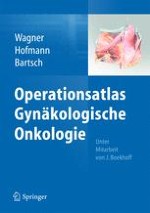2013 | OriginalPaper | Buchkapitel
6. Oberbauchchirurgie
verfasst von : Christina Fotopoulou , Dr. med., Jalid Sehouli, Prof. Dr. med., Peter Langer, Prof. Dr. med.
Erschienen in: Operationsatlas Gynäkologische Onkologie
Verlag: Springer Berlin Heidelberg











